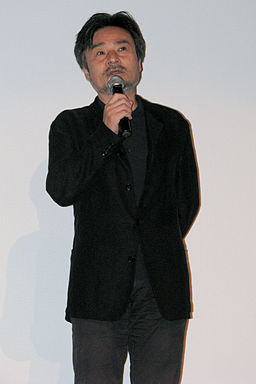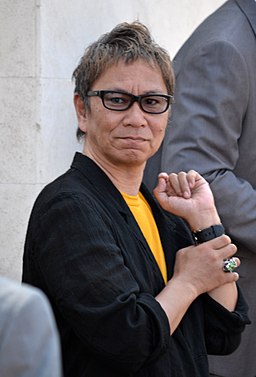1.Prologue: The Diversification of Media Formats
Over the past two decades since we’ve entered the 21st century, the changes in the media landscape have been mind-boggling. The driving force in this shift has been none other than the internet, and by extension, smartphone technology.
Throughout the 20th century, new types of media evolved and became mainstream: newspapers, radio, movies, TV. Mass media is deeply rooted in our society, and while it may decline in power, it is a safe bet to say it will never go extinct.
However, the advent of the internet and the smartphone has had an even more wide-ranging impact on our world than mass media, affecting people’s way of living and even their humanity.
The fact that we can access information from all around the world on demand—whenever, wherever we may be—has definitively changed the nature of content and the way we consume it.
Text-based social media platforms like Twitter and Facebook, photo-centric ones like Instagram and Pinterest, and video-centric ones like YouTube are only the dawning of this new age.
And the success of Hulu and Netflix has paved the way for other giants like Amazon, Google, and Apple to focus their efforts into the video content industry.
With advances in AI, it is expected that human beings will spend less time working. Theoretically, the time they spent at work should then be redirected towards play.
Much of that time will likely be allotted for consuming various types of content.
The question for creatives is, how can you keep growing in terms of your creative expression and output in this day and age?
In this article I’d like to write about a number of Japanese filmmakers whose works in many ways reflect or otherwise address this shift.
2.Kurosawa Kiyoshi (1955-)
Kurosawa Kiyoshi is a movie director, scriptwriter, film critic, and novelist. He made 8mm films while part of a filmmaking club while attending Rikkyo University. Later, he became one of the founding members of the Directors’ Company, a group of young filmmakers eager to pursue their more artistic sensibilities without the restrictions of the major movie studio system. He made his directorial debut in 1983 with the pink film Kandagawa Pervert Wars, and has since made thrillers, dramas, and films in a variety of other genres. He is especially known as a director of horror films characterized by a surreal sensibility distinct from mainstream Japanese horror.
●Cure (1997)
This crime thriller is centered on a psychological game of cat and mouse between a police detective chasing after a killer responsible for a series of bizarre murders, and a mysterious man with short-term memory loss that appears to have some connection to the crimes. This film was Kurosawa’s international breakthrough. Lead actor Yakusho Koji would go on to become a regular in Kurosawa’s films.
●Pulse (2001)
In this horror film, a window opens up between the world of the living and the beyond via the internet, and the ghosts on the other side attempt to invade our world. The world of the dead (in this film, the world of the internet) is depicted as a place of isolation—and the prescience of the metaphor is as thought-provoking as ever. The film won the International Federation of Film Critics Prize at the 54th Cannes Film Festival, and got the Hollywood remake treatment in 2006.
●Bright Future (2003)
This is the story of two men who work at a Japanese oshibori (wet hand towel) factory. The protagonist struggles to connect with those around him, and leads an oppressive existence defined by a constant level of baseline frustration that knows no outlet. This human-centered drama was a break from the bleak tone of Kurosawa’s horror films; however, its depiction of themes such as generational disconnect and a vague sense anxiety and frustration—and how these forces continue to loom over Japanese society—is enough to send shivers down your spine.
●Doppelganger(2003)
This is a black comedy that is about identity. The protagonist, a research scientist at a medical instrument manufacturer, is reserved and sensitive, and close to collapsing under the stress of his work. Cue the appearance of an outgoing, fast and loose doppelganger. The protagonist gradually learns to use his double to his own advantage, with comical results.
●Tokyo Sonata (2008)
This is a film about the various struggles and adversity experienced by a four-person family living in Tokyo. Although there are no obvious signature Kurosawa horror elements like ghosts or killers, the film’s depiction of contemporary society is certainly a kind of horror in an all-too-real sense. This film won the jury prize of the Un Certain Regard category at the 61st Cannes Film Festival, as well as best film at the 3rd Asian Film Awards.
3.Miike Takashi (1960-)
Born in Osaka, Miike Takashi attended the Yokohama Vocational School of Broadcast and Film (now the Japan Institute of the Moving Image), and got his start working as an assistant director on set for numerous directors such as Imamura Shohei. He made his directorial debut in 1991, and ever since he has been prolific in his output, releasing one or two films a year. In Japan he is known for his work in a variety of genres, from comedy to drama to television, but internationally he is known as a master of Japanese horror—specifically for his depictions of extreme violence.
●Audition(2000)
A middle aged widower holds “auditions" to find a suitable new wife, and is smitten with one of the candidates who possesses a mysterious charm. The film begins as a dramatic study into how humans deal with loneliness, but in the climax in the second half, it suddenly becomes full-blown horror. In that sense, perhaps it is the audience themselves that are being auditioned. This film was better reviewed abroad than in Japan, and is even featured in the book 1001 Movies You Must See Before You Die.
●Ichi the Killer (2001)
This psychological thriller is adapted from a manga by Yamamoto Hideo. Set in Kabukicho in Shinjuku, it is the bloody tale of the showdown between a crybaby assassin named Ichi and a cruel, savage yakuza wakagashira. The film is said to be the first film the Japanese film classification and rating organization rated R-18 on account of its depiction of violence—and not because of sexual explicitness. When the film was screened at the Toronto International Film Festival, vomit bags were passed out to the audience (as a publicity gimmick).
●One Missed Call(2004)
This horror film is actually adapted from a novel written by AKB48 producer Akimoto Yasushi. The central mystery: people receive disturbing voice mails from their future selves and later mysteriously die. In the 90s and 2000s, Japan quickly became a country of cellphones, but it’s interesting to see that they—on some level—always harbored a certain vague anxiety toward this mysterious device.
●Zebraman (2004)
This Japanese superhero comedy was produced to commemorate the 100th film starring Aikawa Sho, an actor known for his tough-guy looks. A dull grade school teacher begins dressing up as his favorite old tokusatsu (superhero TV serial) series, and is drawn into an actual battle with aliens trying to invade Earth. And the protagonist dons his costume not for the sake of justice, but as an escape from his mundane day-to-day existence. He is not the kind of larger-than-life figure you see in Hollywood films, but is rather a tragic hero that is emblematic of Japanese society as a whole. Aikawa won the best actor award at the 28th Japan Academy Film Prize ceremony.
●Sukiyaki Western Django (2007)
This is Miike’s homage to Spaghetti Westerns—a subgenre of westerns made in Italy in the 1960s and 70s. It depicts a gang war between the Genji gang (gang color: white), and the Heike gang (red), and is based on the Genpei War. The climactic face-off between katana and gun is a highlight, but the all-English dialogue attempted by the big-name Japanese cast was controversial, to say the least.
●Crows Zero (2009)
This action film was adapted from a manga by Takahashi Hiroshi. The protagonist has been newly transferred to Suzuran High School—an all-boy high school attended by delinquents. Intending to prove that he is worthy of succeeding his yakuza boss father, he sets out to “conquer" and rule the school. This film works as an introduction to Japanese sociological dynamics such as habatsu (cliques), furyo (delinquents), and the yankii (yankee) subculture. Miike also directed a follow-up in 2009.
●Lesson of the Evil (2012)
This slasher film was adapted from a bestselling novel by Kishi Yusuke. Set at a private high school in Machida City, Tokyo, a popular English teacher tackles various problems plaguing the school—but beneath his charming veneer, he is actually a sociopath that kills anybody who is suspicious of him. Certain events lead said teacher to decide to murder his entire homeroom class. It’s interesting that so many school thrillers are made in Japan—one of the world’s most peaceful countries. More intriguing, however, is the message that can be read into the film against the backdrop of recent reforms made to English language education at Japanese elementary schools.
4.Mitani Koki (1961-)
Mitani Koki, one of Japan’s leading screenwriters and playwrights, got his career started as a broadcast writer, while also running the theater company Tokyo Sunshine Boys. He has written many serial TV dramas and NHK Taiga dramas (yearlong historical fiction dramas), and made his debut as a film director with Welcome Back Mr. McDonald in 1997. He has since released a string of hit films, and is known for heartwarming comedies brimming with wit. His most famous work is perhaps the TV detective drama Furuhata Ninzaburo; Mitani has stated that he was a big fan of Columbo since he was a kid, and that he wanted to make the Japanese Columbo.
●Welcome Back Mr. McDonald (1997)
Mitani’s directorial debut is actually a film adaptation of a play he originally wrote for his theater troupe Tokyo Sunshine Boys. It is an ensemble comedy that takes place behind the scenes of a radio play. The film won best screenplay and best supporting actor, among other awards, at the 21st Japan Academy Film Prize ceremony, as well as the Kinema Junpo award for best script.
●All About Our House (2001)
A loving couple decides to build a new house, and asks one of the wife’s juniors at university—an architectural designer—to design the house, and the wife’s father—a builder—to construct the house. Unfortunately, the two have a different vision for the house, and hilarity ensues. The former is an adherent of modernist architecture, while the latter is adamant the house is built using traditional Japanese techniques. The film is an entertaining take on the clash between modern and tradition, the West and the East.
●Suite Dreams (aka The Uchoten Hotel) (2006)
Mitani’s third film as a director is an ensemble comedy that borrows heavily from the 1932 film Grand Hotel. Set in a five-star hotel on New Year’s Eve, it depicts the staff and guests going about their business in the run-up to midnight. Most hit movies in Japan are spinoffs of TV dramas or anime film, but this comedy film was an exception, and went on to become the third-highest grossing domestic film of 2006 in Japan.
●The Magic Hour (2008)
A man is caught having an affair with his mafia boss’s mistress, and in exchange for his life promises to recruit a legendary hitman. Closing in on his deadline and desperate, he tricks a struggling actor into believing he is playing said hitman in a film production. Hijinks ensue. Side note, this was the last onscreen appearance of film director Ichikawa Kon.
●A Ghost of a Chance (2011)
A man arrested for murdering his wife claims that he has an alibi: he was under sleep paralysis at the time. The third-rate lawyer tasked with defending him brings in a ghost as a witness—an ochimusha (fallen samurai) who claims he was the one to put the defendant in sleep paralysis. The plot is ridiculous, but the film has Mitani’s trademark humor and heartwarming story beats.
●The Kiyosu Conference (2013)
Mitani, known for being a history buff, published a period novel in 2012 based on the 1582 Kiyosu Conference. The following year he adapted his book into a period film. Period films, of course, have a reputation for being serious and stuffy; despite the fact that this film is set during the Sengoku period, this comedic look at history draws its charm from the fact that it focuses not on military clashes but on a conference.
5.Iwai Shunji (1963-)
Iwai Shunji was born in Sendai, Miyagi Prefecture. He got his start working on music videos and TV dramas, and won the Directors Guild of Japan New Directors Award for his work Fireworks, Should We See It from the Side or the Bottom?—unprecedented for a TV drama. He is passionate about incorporating the latest video technology into his projects, and was one of the first in his field to use the now-industry standard non-linear editing system Avid. In 2003, he screened his short film Hana and Alice over the internet. His work is characterized by a signature dreamy visual style that evokes nostalgia.
●Love Letter (1995)
Iwai’s first feature-length film intended for theatrical release is the story of a woman who sends a letter to the fiancé she lost in a mountain climbing accident. Curiously, she receives a reply, and thus begins a correspondence as the sender and recipient learn more about each other. The lead is played by former pop idol singer Nakayama Miho, who received numerous best actress awards for her portrayal in this film. The film itself also won best film, best supporting actor, and numerous other awards at the 19th Japan Academy Film Prize ceremony. It was especially a big hit in South Korea, where it became a full-fledged phenomenon.
●Swallowtail (1996)
This film is set in a fictional Japan where the yen has become the most powerful currency in the world. This attracts an influx of migrant workers to Japan, where they try to make ends meet despite being subject to discrimination from the native Japanese. While the film has its share of detractors within Japan, it was better received abroad, and boosted Iwai’s international reputation. It won the Most Popular Film award at the 20th Japan Academy Film Prize ceremony. This is a film that deserves a second look, especially as the debate continues about foreign migrant workers. The theme song, titled "Swallowtail Butterfly (Ai no Uta)" and performed by the Yen Town Band (fronted by lead actor and musician Chara), was a massive hit.
●All About Lily Chou-Chou (2001)
This coming-of-age tale depicts the struggles of a middle school student against the backdrop of the musical tapestry woven by Kobayashi Takeshi. Started as an experimental internet novel in 2000, readers followed the story through periodic posts made by Iwai on a message board, and were even able to join in on the process with their own posts. After the story came to a conclusion, Iwai adapted it into a movie. He also made industry news by being the first Japanese director to shoot a film using Sony’s digital video camera HDW-F900.
●Hana and Alice (2004)
This teenage rom-com is centered on a love triangle between best friends Hana and Alice and an upperclassman that Hana admires. This is the feature-length adaptation of a series of internet shorts produced in 2003 to commemorate chocolate brand Kitkat’s 30th anniversary in Japan. Iwai also composed the soundtrack, comprised mostly of piano melodies designed to be evoke nostalgia. A feature-length animated prequel, The Case of Hana & Alice, was released more than a decade later.





























